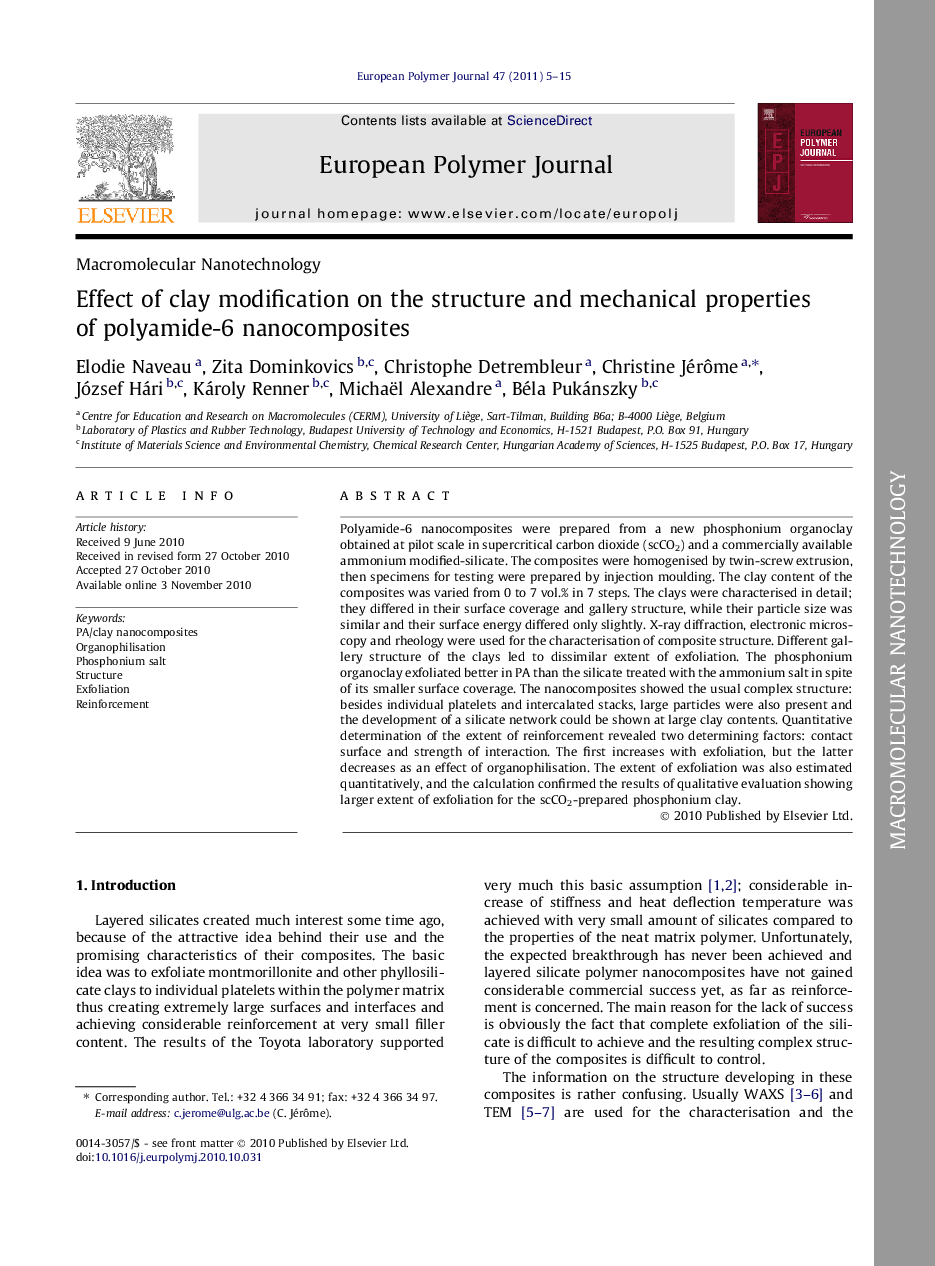| Article ID | Journal | Published Year | Pages | File Type |
|---|---|---|---|---|
| 1399959 | European Polymer Journal | 2011 | 11 Pages |
Polyamide-6 nanocomposites were prepared from a new phosphonium organoclay obtained at pilot scale in supercritical carbon dioxide (scCO2) and a commercially available ammonium modified-silicate. The composites were homogenised by twin-screw extrusion, then specimens for testing were prepared by injection moulding. The clay content of the composites was varied from 0 to 7 vol.% in 7 steps. The clays were characterised in detail; they differed in their surface coverage and gallery structure, while their particle size was similar and their surface energy differed only slightly. X-ray diffraction, electronic microscopy and rheology were used for the characterisation of composite structure. Different gallery structure of the clays led to dissimilar extent of exfoliation. The phosphonium organoclay exfoliated better in PA than the silicate treated with the ammonium salt in spite of its smaller surface coverage. The nanocomposites showed the usual complex structure: besides individual platelets and intercalated stacks, large particles were also present and the development of a silicate network could be shown at large clay contents. Quantitative determination of the extent of reinforcement revealed two determining factors: contact surface and strength of interaction. The first increases with exfoliation, but the latter decreases as an effect of organophilisation. The extent of exfoliation was also estimated quantitatively, and the calculation confirmed the results of qualitative evaluation showing larger extent of exfoliation for the scCO2-prepared phosphonium clay.
Graphical abstractFigure optionsDownload full-size imageDownload as PowerPoint slide
